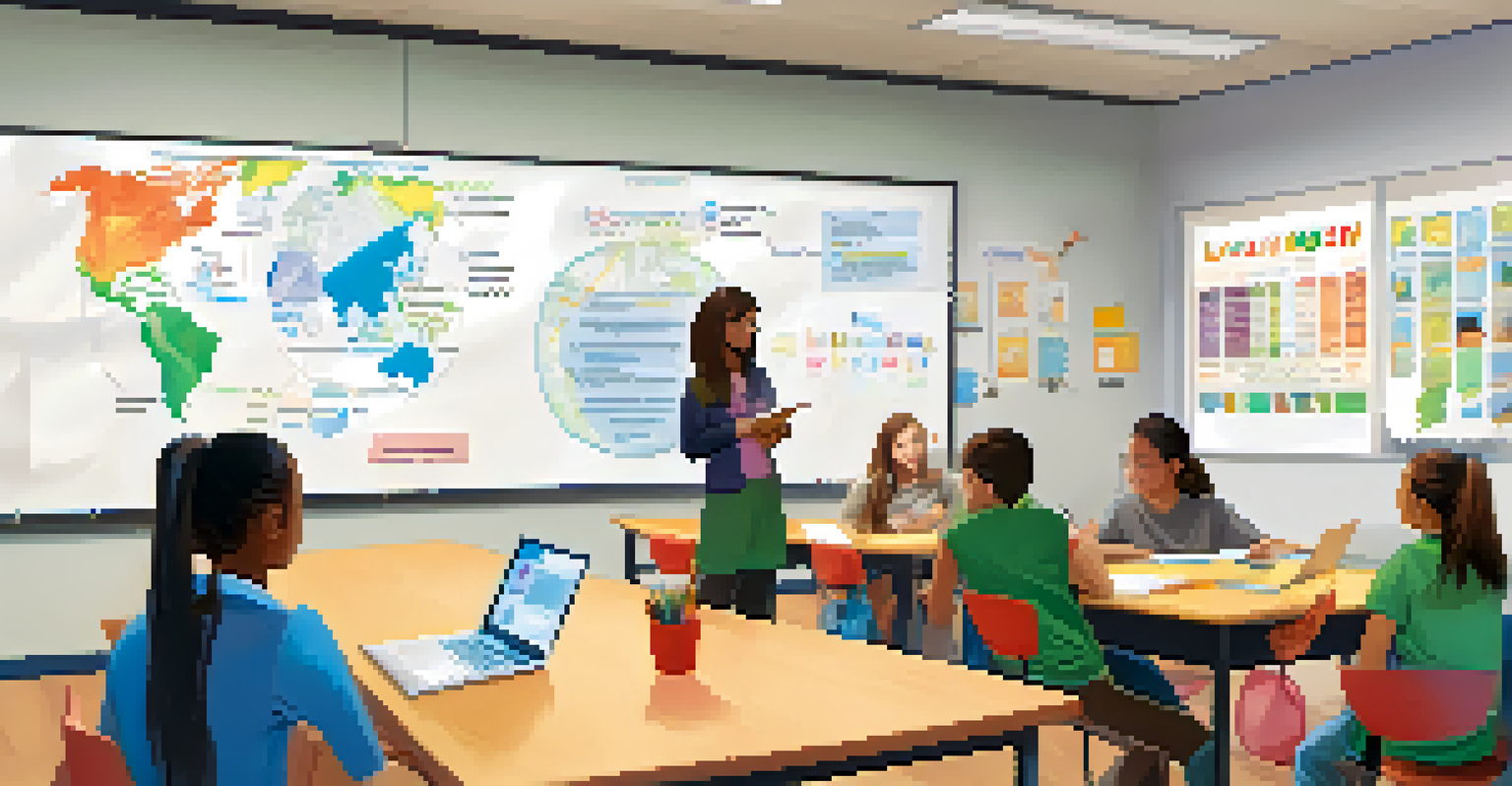Empowering Students Through Community-Driven Learning

Understanding Community-Driven Learning
Community-driven learning focuses on the collaboration between students, educators, and community members. This approach fosters an environment where learning extends beyond the classroom walls, allowing students to engage with real-world issues. By harnessing local resources and knowledge, students can apply their classroom lessons in meaningful contexts, making education more relevant and impactful.
Education is not the filling of a pail, but the lighting of a fire.
Consider a scenario where students collaborate with local organizations to tackle environmental challenges. They might engage in projects like community clean-ups or sustainability workshops. These experiences not only enrich their understanding of environmental science but also instill a sense of responsibility and ownership in their education.
The key to this model is the active involvement of the community, which creates a support system for students. This collaboration encourages peer-to-peer learning and mentorship, ultimately leading to a more holistic educational experience that prepares students for future challenges.
Benefits of Community Engagement in Education
Engaging with the community offers numerous benefits for students. It enhances their social skills, as they interact with diverse groups and learn to communicate effectively. Additionally, students gain a broader perspective on societal issues, which can inspire them to become active, informed citizens.

For example, when students work on community service projects, they not only contribute positively to their surroundings but also develop empathy and leadership skills. These experiences can be transformative, shaping their values and encouraging them to make a difference in their communities.
Collaboration Enhances Learning
Community-driven learning fosters collaboration between students and local organizations, making education more relevant and impactful.
Moreover, community engagement often leads to improved academic performance. The motivation derived from seeing the real-world application of their studies can drive students to excel, resulting in higher levels of engagement and achievement in school.
Fostering Collaboration Between Schools and Communities
To effectively implement community-driven learning, schools need to build strong partnerships with local organizations. This collaboration can take various forms, such as internships, mentorship programs, or joint community events. By aligning educational goals with community needs, schools can create valuable learning opportunities for students.
Tell me and I forget, teach me and I remember, involve me and I learn.
For instance, a local business might offer students internships that provide hands-on experience in their field of interest. This not only enhances their learning but also helps them build a professional network early on, giving them an advantage when entering the job market.
These partnerships can also benefit the community by fostering a sense of investment in education. When local organizations contribute to student learning, they help cultivate a knowledgeable and skilled future workforce, ultimately benefiting everyone involved.
Real-World Examples of Successful Initiatives
Many schools have successfully adopted community-driven learning initiatives that serve as excellent examples. One standout case is the 'Service-Learning' program, where students engage in projects that address community needs while enhancing their academic skills. Participants often report increased motivation and satisfaction in their learning.
Another example is the 'Community Classroom' model, which integrates local resources into the curriculum. For instance, students might study local history by collaborating with a nearby museum, resulting in a deeper understanding of their community's heritage and culture.
Real-World Skills Development
Engaging in community projects equips students with essential skills like problem-solving and teamwork that are crucial for their future.
These initiatives demonstrate the potential of community-driven learning to transform educational experiences. By connecting students with their communities, schools can foster a sense of belonging and purpose that enriches their education.
Empowering Students Through Skill Development
Community-driven learning equips students with essential skills that are often overlooked in traditional education. Skills such as problem-solving, critical thinking, and teamwork are fostered through collaborative projects and real-world challenges. These competencies are vital in today's rapidly changing job market.
For example, a project where students design a community garden requires them to collaborate, plan, and execute their vision. This hands-on experience not only teaches them about gardening but also hones their project management and communication skills.
As students take ownership of their learning, they become more confident and self-sufficient. This empowerment not only prepares them for future academic endeavors but also instills a lifelong love for learning and personal growth.
Incorporating Technology in Community Learning
Technology plays a vital role in enhancing community-driven learning experiences. With tools like social media, students can connect with community members and organizations beyond their immediate environment. This opens up a wealth of resources and perspectives that can enrich their learning.
For instance, students might use online platforms to collaborate with peers from different regions on a shared project. This not only broadens their understanding of diverse cultures but also teaches them how to work effectively in a digital landscape, a crucial skill in today's interconnected world.
Technology Expands Learning Horizons
Incorporating technology into community learning enhances collaboration and enables students to connect with diverse perspectives.
Furthermore, technology can facilitate the documentation and sharing of community projects, allowing students to showcase their work and reflect on their learning journey. This process can deepen their understanding and appreciation of their contributions to the community.
Challenges and Solutions in Community-Driven Learning
While community-driven learning offers numerous benefits, it also presents challenges that educators and communities must address. One common hurdle is coordinating schedules between schools and community organizations, which can sometimes hinder collaboration. Flexibility and open communication are essential to overcoming these obstacles.
Another challenge is ensuring that all students have equal access to these opportunities. Schools should strive to create inclusive programs that cater to diverse needs and backgrounds, ensuring that every student can participate in community-driven projects.

By addressing these challenges head-on, schools and communities can create a more robust framework for community-driven learning. Emphasizing collaboration and inclusivity will ultimately lead to richer educational experiences for all students.